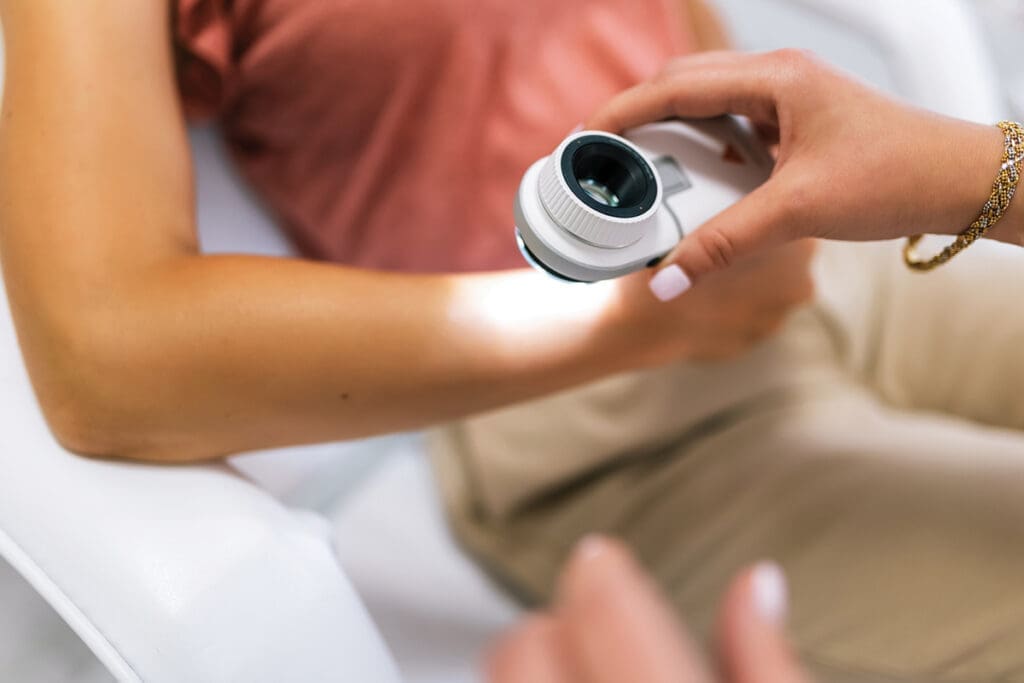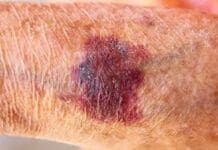By Dr. Jessica Clark, Board Certified Dermatologist, Beach Dermatology Skin Wellness Clinic
As a board-certified dermatologist, one of the most important aspects of my practice is educating patients about skin cancer. Skin cancer is the most common type of cancer in the United States, but the good news is that when detected early, it is often treatable. Let’s discuss the three most common types of skin cancer—basal cell carcinoma, squamous cell carcinoma, and melanoma—and what you should watch for to protect your skin.
 prevention1. Basal Cell Carcinoma (BCC)
prevention1. Basal Cell Carcinoma (BCC)
Basal cell carcinoma is the most common type of skin cancer, accounting for about 80% of all skin cancer cases. It typically develops in the basal cells, which are found in the lower part of the epidermis (the outer layer of the skin). Basal cell carcinoma is generally slow-growing and rarely spreads to other parts of the body, but it can cause significant local damage if left untreated.
What to look for:
Appearance: BCC often appears as a small, pearly or waxy bump, sometimes with visible blood vessels. It can also look like a flat, scaly patch.
Location: It usually develops on sun-exposed areas, such as the face, ears, neck, scalp, chest, shoulders, back, or arms.
Other signs: BCC may bleed, crust, or form a sore that doesn’t heal.
While basal cell carcinoma is rarely life-threatening, early detection and treatment are important to prevent disfigurement or damage to surrounding tissue.
2. Squamous Cell Carcinoma (SCC)
Squamous cell carcinoma is the second most common type of skin cancer, responsible for about 20% of all skin cancer cases. SCC develops in the squamous cells, which make up most of the skin’s outer layer. Unlike basal cell carcinoma, squamous cell carcinoma can spread to other parts of the body if left untreated, though it typically remains localized in the beginning stages.
What to look for:
Appearance: SCC often appears as a red, scaly, or crusted bump or patch. It may be firm to the touch and may bleed or ulcerate. *I always remind patients to call me if they have a small red bump that looks like a hard pimple or bug bite that has been there over a month. People often think SCC is a pimple or a spider bite and try to squeeze it. I have often seen primary care doctors treat these for a spider bite or cyst and they end up in my office because “it won’t go away.” SCC is important to catch early because it CAN SPREAD TO LYMPH NODES, especially in the neck area.
Location: It commonly develops in areas that have been sun-damaged, such as the face, ears, neck, chest, backs of the hands, or arms. However, it can also appear in other areas, including mucous membranes (like the mouth or genital area).
Other signs: SCC may be tender or itchy and may cause pain if it begins to grow deeper into the skin.
If caught early, squamous cell carcinoma has a high cure rate, but like BCC, it requires prompt treatment to avoid complications.
3. Melanoma
Melanoma is the least common but most aggressive form of skin cancer. It arises from melanocytes, the cells responsible for producing pigment (melanin) in the skin. Melanoma can develop in previously normal skin or from an existing mole. Unlike BCC and SCC, melanoma has a higher likelihood of spreading to other parts of the body, making it the deadliest form of skin cancer if not caught in its early stages.
What to look for:
Appearance: Melanomas often have an irregular shape, uneven color, and may have jagged or blurry borders. The color can vary from brown to black, and in some cases, it can be red, blue, or white.
Location: Melanoma can appear anywhere on the body, including areas not typically exposed to the sun, like the soles of the feet, palms of the hands, or under the nails. It is also common in moles on sun-exposed areas such as the back, legs, and face.
Other signs: A new mole or a change in an existing mole’s size, shape, or color should raise suspicion. Melanomas can also become painful, itchy, or bleed.
Because melanoma can spread quickly, early detection is key. That’s why I always encourage my patients to regularly monitor their skin for any changes and to schedule routine skin exams.
Prevention and Early Detection
The good news about skin cancer is that it’s often preventable, and when caught early, it’s highly treatable. Here are a few important tips for prevention:
Sun Protection: Apply broad-spectrum sunscreen with an SPF of 30 or higher every two hours when outdoors, even on cloudy days. Wear protective clothing, hats, and sunglasses, and avoid tanning beds.
Skin Checks: Perform regular self-exams to check for any new moles or changes in existing ones. Use the ABCDE rule for melanoma:
Asymmetry (uneven shape)
Border (irregular edges)
Color (multiple colors)
Diameter (larger than 6mm)
Evolution (changes in size, shape, or color over time)
Regular Dermatology Visits: See a dermatologist for a full-body skin exam annually, or more frequently if you have a history of skin cancer or are at higher risk due to factors like fair skin, family history, or excessive sun exposure.
Conclusion
While the idea of skin cancer can be alarming, understanding the differences between basal cell carcinoma, squamous cell carcinoma, and melanoma can help you feel more empowered when it comes to taking care of your skin. Remember, early detection and protection are key to preventing skin cancer or catching it early when treatment is most effective. If you notice any changes in your skin or have concerns, don’t hesitate to schedule an appointment with a dermatologist. It’s always better to be safe than sorry!
Call (850) 238-8511 to schedule a spot check with Board Certified Dermatologist Dr. Jessica Clark.





















































